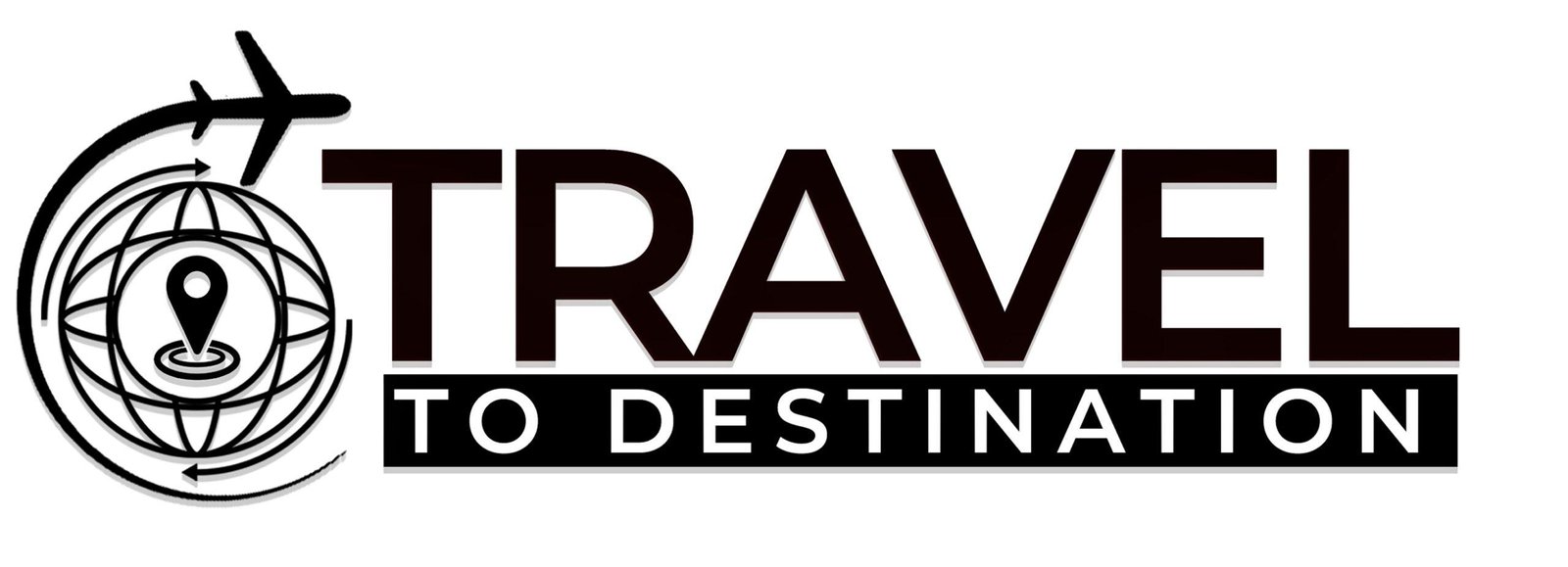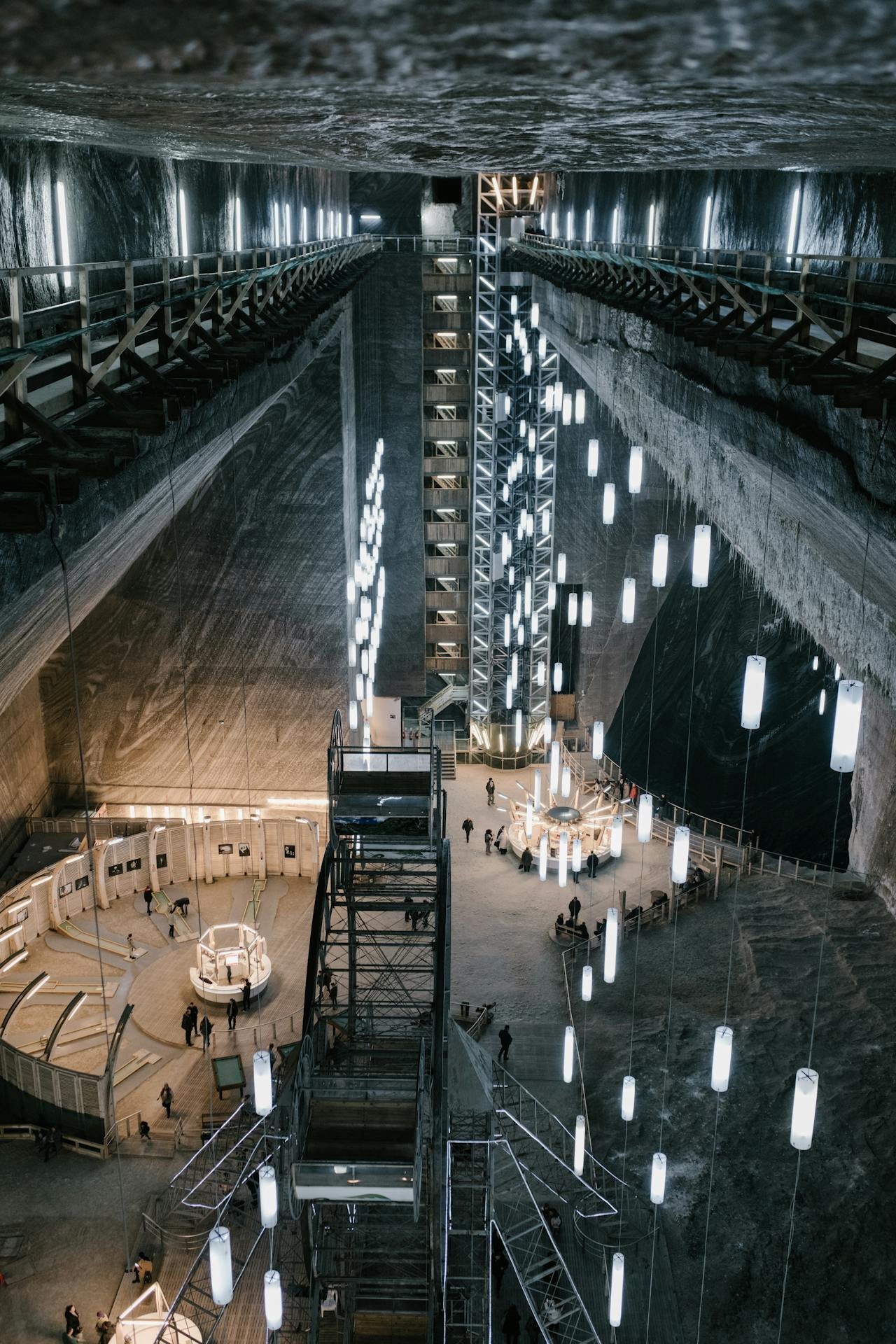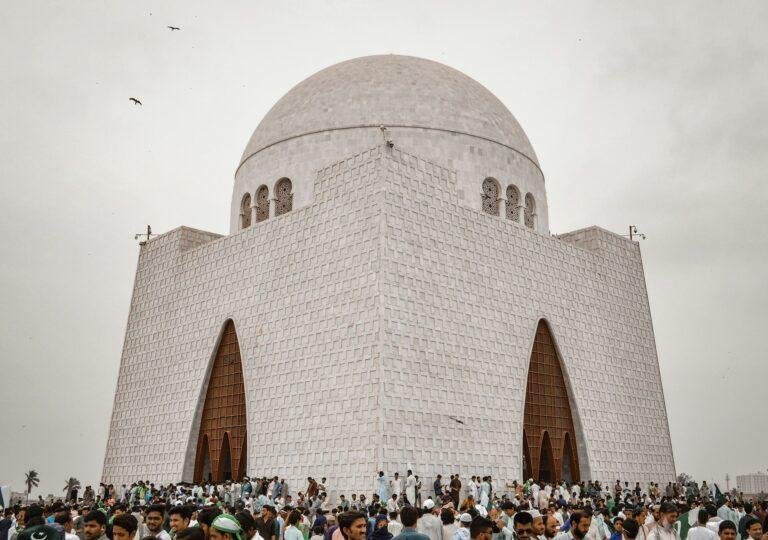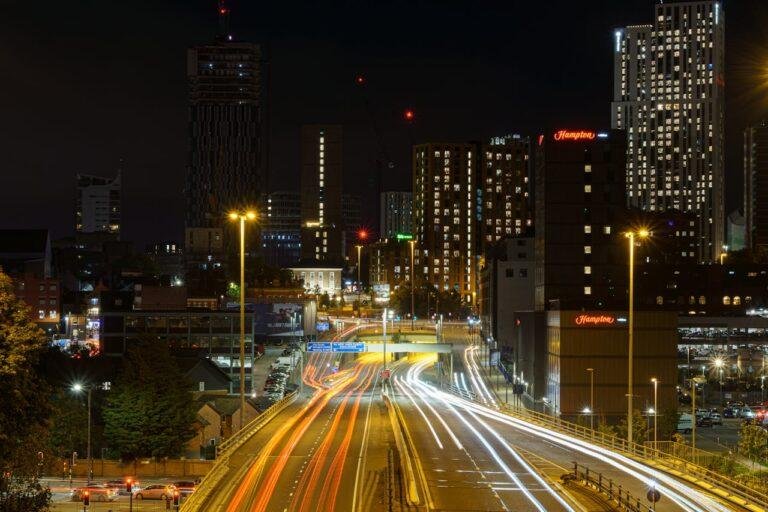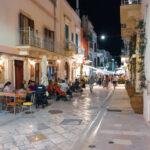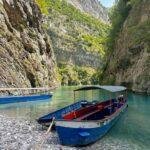The Khewra Salt Mine, also known as Mayo Salt Mine. It stands as one of Pakistan’s most significant natural and historical landmarks. Located in the heart of the Salt Range, this vast underground network is not only the largest salt mine in Pakistan but also the 2nd largest salt mine in the world. With an operational history that spans over two millennia and an annual output that feeds global demand for Himalayan pink salt, the Khewra Mine represents an extraordinary blend of geological wonder, industrial capability, and touristic appeal.
This article explores the mine in comprehensive detail—its history, formation, mining practices, tourism development, medical applications, and its socio-economic importance. All major interesting facts about Khewra Salt Mines are covered with SEO-aligned terminology and content structure to support maximum online visibility.
Khewra Salt Mine Facts
Location and Geological Setting
The Khewra Salt Mine is located in the Jhelum District of Punjab, Pakistan, at the foothills of the Salt Range—a series of low-lying hills formed by the collision of the Indian and Eurasian tectonic plates. The salt range geology dates back over 800 million years, comprising thick sequences of evaporite deposits layered with ancient sandstone and shale. The mine lies about 160 kilometers south of Islamabad and 30 kilometers from the city of Jhelum, making it easily accessible by road and rail.
The Khewra Salt Range is part of a larger structural zone that includes several other mines, but Khewra remains the most productive and historically significant.
Historical Significance and Discovery
The mine’s history dates back to the campaigns of Alexander the Great, whose troops reportedly discovered the salt deposits in 326 BCE when their horses began licking the rocks in the area. While no formal mining occurred during that period, local tribes began extracting rock salt manually during the Mughal and Sikh eras.
Modern mining operations began under British rule in 1872 when the British engineer Dr. H. Warth introduced scientific salt extraction techniques and constructed the main tunnel that is still in use. This development marked the transition from artisanal mining to mechanized extraction, setting the foundation for today’s industrial-scale operations.
Ownership and Administration
Since Pakistan’s independence in 1947, the Khewra Salt Mine has been administered by the Pakistan Mineral Development Corporation (PMDC), a government body responsible for resource extraction and mineral wealth management. The PMDC not only manages salt production but also oversees the mine’s development as a tourist attraction, educational resource, and therapeutic site.
Mine Infrastructure and Physical Features
Tunnel System and Structural Depth
The Khewra Salt Mine spans an expansive subterranean network, covering over 110 square kilometers, and is recognized as the second largest salt mine in Pakistan and the world’s second-largest salt mine in the world. Its underground labyrinth consists of approximately 40 kilometers of tunnels, meticulously carved into the Salt Range over centuries of salt extraction.
The mine has 19 stories, of which 11 are below the surface. This multi-tiered formation has been developed with strategic engineering to preserve structural integrity while maximizing access to the vast salt reserves at Khewra.
The deepest point of the mine plunges 730 meters into the mountain, revealing stunning salt crystal formations, saline ponds, and rock salt pillars. The underground temperature inside the Khewra Salt Mine remains stable throughout the year, averaging between 18°C and 20°C.
This natural climate control makes the mine an ideal space for both tourism and therapeutic use. It is one of the reasons the mine hosts an underground salt therapy ward designed for respiratory patients.
Mining Method: Room and Pillar Technique
The Khewra Salt Mine uses a highly stable and time-tested mining method known as the room and pillar technique. This involves creating large “rooms” or open spaces where the salt is removed, while leaving solid pillars of salt to support the mine’s overhead strata. Typically, 50% of the salt deposits are extracted, while the other 50% is left in place to serve as structural support.
This method serves two primary purposes:
- Structural Safety: Leaving alternating pillars of salt ensures the mine does not collapse under the weight of its overburden.
- Long-Term Sustainability: By only partially extracting the available natural salt, the mine’s operational life can be extended for centuries.
The pillars are strategically spaced and geometrically aligned to resist seismic stress and facilitate airflow. This is critical not only for miner safety but also for preserving salt crystal formations and underground features like salt ponds and brine lakes.
The system has proven so effective that Khewra Salt Mine has remained operational for over 150 years since the British initiated scientific mining in 1872, making it one of the most stable and productive salt mines on earth.
Structural Highlights of the Mining Network
- Salt Bridges and Archways: Naturally formed or carved salt bridges connect chambers and add to the aesthetic and structural design.
- Man-Made Ventilation Systems: Passive airflow systems ensure breathable air inside the salt mine, while protecting sensitive salt deposits from moisture damage.
- Elevated Observation Galleries: Viewing points have been constructed within some deeper chambers to provide visitors with an immersive look at salt crystal formations, salt lamps, and brine pools.
- Salt Formations Make: From glowing walls to reflective ceilings, the salt formations inside Khewra showcase nature’s ability to sculpt crystalline structures that remain untouched by sunlight or human alteration.
Advanced Safety Measures and Mine Longevity
Given that the mine is a popular site not just for extraction but also for public tourism, the Pakistan Mineral Development Corporation (PMDC) has implemented a rigorous safety and maintenance system. This includes:
- Laser-guided tunnel mapping.
- Salt structure stress testing.
- Mine survey institute training for technical staff.
- Periodic maintenance of tunnel linings and transport systems.
With an estimated 600 million tons of recoverable salt reserves, the mine stays operational year-round, with projections suggesting another 350+ years of economically viable mining under current extraction rates.
Types of Salt and Product Applications
The Khewra Salt Mine is globally renowned for its production of high-purity rock salt, particularly pink Himalayan salt, which is mined from deep within the ancient Salt Range of Pakistan. With a mineral composition rich in iron, calcium, magnesium, and potassium, this salt is not just a culinary staple — it has become a key raw material in cosmetic, architectural, therapeutic, and industrial sectors.
This section outlines the types of salt, their processing methods, regional relevance, and commercial applications, including local and global demand insights.
1. Himalayan Pink Salt (Edible Grade)
One of the primary outputs of the mine in Pakistan is Himalayan pink salt — a crystalline rock salt with a pink-orange hue derived from its iron oxide content. Mined in large blocks and later ground into fine, coarse, or slab forms, this natural salt is marketed as a gourmet alternative to standard table salt.
Applications:
- Table salt (iodized and non-iodized varieties).
- Cooking slabs for grilling and serving.
- Bath salts for relaxation and skin exfoliation.
- Electrolyte drinks and supplements.
- Brining and food preservation.
This product is exported under “Pakistan salt” branding to markets across North America, Europe, East Asia, and the Middle East.
2. Salt Bricks and Salt Blocks
Salt bricks, carved directly from the salt deposits of the Khewra Salt Mine, are used extensively in both architectural design and commercial decor. These blocks are notable for their antibacterial properties, durability, and radiant aesthetic under lighting.
Applications:
- Interior design elements in spas, saunas, and wellness centers.
- Salt walls and salt therapy rooms.
- Decorative facades in health resorts.
- Flooring, tiling, and ceiling panels.
In Pakistan, these bricks are used in salt rooms developed near the Khewra city area and in Islamabad’s therapeutic spas. Globally, they are shipped for wellness retreats and boutique hotels.
3. Salt Lamps and Decorative Products
Carved salt lamps are one of the most recognizable consumer products derived from mined salt. These are hollowed blocks of pink salt with a bulb or LED inside, often claimed to emit negative ions and purify indoor air.
Applications:
- Home decor for mood lighting.
- Spa ambiance enhancement.
- Alleged indoor air purification (though scientifically debated).
- Gifts and souvenir items.
These salt lamps are among the top-selling non-edible exports from the Khewra Salt Mines in Pakistan, widely sold under brand names like Saltean and Standard Salts.
4. Salt Crystal Art and Sculptures
Skilled artisans use salt crystal formations to carve cultural and religious sculptures, often for local display inside the mine and for export. These include miniature replicas of famous landmarks like Minar-e-Pakistan, mosques, and domes — many of which are visible to visitors inside the Khewra.
Applications:
- Religious and cultural art.
- Tourist souvenirs.
- Museum exhibits.
- Corporate gifts.
These items are popular among tourists inside the mine, as well as in international craft and mineral exhibitions.
5. Industrial Grade Salt (Non-Edible)
Industrial salt from the Khewra salt mine accounts for a significant share of salt production. This grade of mined salt is not suitable for consumption but is essential for several industries.
Applications:
- De-icing roads in cold regions (especially Europe and North America).
- Chlor-alkali industry (for caustic soda and chlorine production).
- Textile dyeing and leather tanning.
- Water treatment plants.
- Oil drilling operations.
Pakistan’s largest salt mine produces bulk quantities of industrial salt, with direct supply routes via rail and road to the south of Islamabad and the Jhelum and Mianwali region.
6. Specialized Products: Salt Tiles, Cooking Slabs, Salt Inhalers
In recent years, product diversification from Khewra salt reserves has expanded into niche areas.
Examples:
- Salt tiles for kitchens and commercial spaces.
- Salt cooking slabs are used directly on stovetops and grills.
- Salt inhalers for respiratory support.
- Salt licks for livestock in agriculture.
- Salt bath spheres and scrubs in cosmetic lines.
These are marketed both within Pakistan and across Europe under wellness and organic living product lines.
Salt Production and Global Demand
The Khewra Salt Mine produces an estimated 350,000 tons of salt per annum, making it the central hub for both domestic supply and export of rock salt in the world.
- Export markets: United States, Canada, Germany, UAE, Turkey, India.
- Export products: Bulk Himalayan salt, decorative items, therapeutic bricks.
- Export channels: Seaports of Karachi and Port Qasim via rail freight from the mine entrance.
- Local sales: Salt therapy clinics, hospitals, and wellness centers near the salt mine.
Despite the large volume, only a fraction of the mine’s total reserves is currently being tapped — making salt reserves at Khewra one of the most sustainable long-term mineral assets in Asia.
Why Khewra Products Are Geopolitically and Economically Important?
The Khewra Salt Mine is more than just a mine in Pakistan—it is a strategic mineral resource with global relevance. With global demand for pink Himalayan salt increasing due to wellness trends, and with eco-friendly design gaining momentum, salt products from Khewra have become a high-value export commodity.
Moreover, Khewra contributes significantly to local employment and regional development. Many artisans, traders, and logistics workers in Khewra city and its surrounding towns depend on this industry.
Tourist Attractions Inside the Mine
Declared a tourist destination in Pakistan, the Khewra Salt Mine attracts more than 250,000 visitors annually. Thanks to focused infrastructure investment, the mine in Pakistan has been transformed into an accessible, safe, and visually spectacular site for both domestic and international tourists. The facility includes a working mine train, paved walking galleries, emergency lighting, and multilingual guides.
The Khewra Salt Mines in Pakistan offer a unique underground sightseeing experience that combines natural wonders with cultural artistry.
1. Khewra Salt Mosque
The mosque inside the Khewra Salt Mine, often referred to as the Khewra Salt Mosque, is one of the most extraordinary religious structures in the world. It is made of salt bricks, it features a beautifully preserved prayer area, a salt-carved minbar, and chandeliers suspended from the salt ceilings.
The natural translucency of the salt crystal formations allows ambient light to pass through, giving the interior a softly illuminated, almost ethereal glow. This site is widely recognized as the only underground mosque in the world constructed entirely from salt, making it a rare blend of spiritual architecture and geological wonder.
2. Miniature Monuments
Artisans from the Pakistan Mineral Development Corporation (PMDC) have carved several national monuments out of rock salt, including:
- Minar-e-Pakistan
- Badshahi Mosque
- Shalimar Gardens
- The Great Wall of China (partial segment)
Each model was sculpted using red, white, and pink salt crystals to replicate architectural detail. These models promote educational tourism, especially for school and university trips.
3. Salt Ponds
Underground brine lakes lie still and reflective, offering mirror-like visuals that make them appear bottomless. These salt ponds are highly saturated with saline and are not safe for wading or swimming, but platforms and railings are provided for observation and photography.
4. Salt Bridge (Pul-Saraat)
The Salt Bridge, known locally as Pul-Saraat, is a naturally occurring salt formation suspended over a saline pool. It is considered one of the most fragile and delicate structures in the salt mine, yet it remains intact despite decades of exposure. It is not walkable but viewable from a protected platform.
5. Salt Fountain
A drip-fed salt fountain forms slowly from mineral accumulation. Over time, salt-laden water evaporates, leaving solid salt deposits that resemble a stalagmite. This process illustrates the geological activity that has formed the mine’s salt formations over millions of years.
6. Sheesh Mahal (Salt Crystal Palace)
The Sheesh Mahal, or “Mirror Palace,” is a chamber inside the Khewra Salt Mine lit with colored lights placed behind salt crystals on the roof and walls. The refracted light creates a glistening spectacle, enhancing the pink salt’s natural colors and drawing visual comparisons to a gemstone cavern.
7. Salt Lamp Gallery
The salt lamp exhibit showcases decorative salt blocks, some carved into vases and animals, others hollowed out for use as ambient lighting. These lamps are a major export product of the Khewra salt mine, prized for their aesthetic and purported therapeutic value.
Additional Features for Visitors
- Guided Tours: Multilingual guides are available, especially in Urdu and English.
- Khewra Salt Mines Map: Provided at the entrance and used during tours.
- Mine Train Ride: A small train runs from the mine entrance through the main tunnel, giving visitors a full tour route.
- Souvenir Shops: Located near the salt mine, these shops sell salt bricks, sculptures, and Himalayan salt products.
Medical and Therapeutic Facilities in the Khewra Salt Mine
The Khewra Salt Mine is not only a source of salt, economic and touristic value — it also serves as a site for alternative medicine. A 20-bed salt therapy center was established inside the salt mine in 2007 to offer halotherapy, a natural treatment that involves breathing air saturated with salt particles.
Why Salt Therapy?
The microclimate inside the Khewra Salt Mine is sterile, allergen-free, and rich in negative ions. The presence of salt in the mine helps reduce inflammation and mucous buildup in the lungs, which can provide relief for:
- Chronic asthma.
- Allergic bronchitis.
- COPD (Chronic Obstructive Pulmonary Disease).
- Sinusitis.
- Skin allergies (through dermal exposure).
This concept, inspired by European speleotherapy practices, has gained popularity in Pakistan for patients who are resistant to pharmaceutical interventions.
Facility Details
- Temperature control: Maintained between 18–20°C.
- Humidity levels: Ideal for respiratory conditions.
- Monitoring: Patients are medically supervised by trained personnel.
- Access: Therapy sessions must be booked in advance via PMDC clinics.
The underground therapy ward is located on one of the lower levels of the mine and is equipped with beds, seating, filtered airflow, and low lighting to maintain a peaceful environment.
Economic and Strategic Importance
The Khewra Salt Mine plays a vital role in Pakistan’s mineral economy and export structure. As the second-largest salt mine in the world and the largest salt mine in Pakistan, it is considered a national asset in terms of mineral wealth, trade potential, and local development.
Contribution to Salt Production and Export
The Khewra Salt Mine contributes approximately 350,000 tons of rock salt annually, accounting for over 50% of Pakistan’s total salt production. This output is primarily natural salt and Himalayan pink salt, recognized globally for its high purity (up to 99%) and mineral richness. The mined salt is processed and packaged for various industrial and commercial uses, including:
- Edible salt (culinary-grade).
- Salt blocks and salt bricks (used in architecture and spas).
- Salt lamps and decorative items.
- Industrial-grade rock salt for de-icing, chemical processing, and livestock.
Export markets for Khewra’s salt include Europe, North America, the Middle East, and Southeast Asia. The branding of Himalayan pink salt as a premium product in global markets has placed the Khewra salt mine in Pakistan at the center of international trade and wellness industries.
Revenue Generation and Government Ownership
Managed by the Pakistan Mineral Development Corporation (PMDC) since 1974, the mine generates significant revenue for both the federal government and local authorities. Revenue comes not only from the sale of salt but also from tourism, product exports, and licensing agreements with international distributors of Khewra salt.
The mine is also a hub of education and community development. The Mayo Salt School, named after Lord Mayo, and the Mine Survey Institute offer technical education to the children of miners and local youth. Community programs include healthcare centers, water treatment plants, and subsidized housing, funded by revenues generated from salt reserves at Khewra.
Employment and Local Economy
The mine is home to over 600 permanent employees and supports hundreds of indirect jobs in packaging, logistics, salt craft, tourism, and local trade. The availability of skilled labor in the Khewra city and surrounding areas has allowed the salt mine to become a sustainable employer for generations.
In addition, the site is used as a case study in geology, mining engineering, and sustainable extraction methods by national and international universities. Its adoption of room-and-pillar mining techniques, preservation of geological structures, and environmental safety protocols make it a model for responsible salt extraction.
Environmental and Cultural Recognition
The Khewra Salt Mine, due to its natural, geological, and cultural richness, has been included in the UNESCO Tentative List for World Heritage Sites under the official nomination title: “The Salt Range and Khewra Salt Mine.” This recognition highlights the mine not only as an industrial site but also as a cultural heritage location with environmental significance.
UNESCO Nomination: Justification
The nomination by Pakistan’s Ministry of Heritage and Culture is based on three core criteria:
- Geological significance: The Salt Range formation, where the mine is situated, contains some of the oldest sedimentary rocks in South Asia, dating back 800 million years. It is considered a natural archive of the Earth’s early tectonic history.
- Cultural continuity: The historical usage of the mine for salt extraction by successive civilizations—from the ancient Indo-Greeks to Mughals, Sikhs, and British—reflects a continuous thread of mineral utilization and trade.
- Architectural and artistic value: Structures like the salt mosque, salt bridge, and artistic salt crystal formations inside the mine showcase a unique form of underground architecture using locally available materials, i.e., salt bricks and salt blocks.
Environmental Management
Although the mine operates as an industrial site, the PMDC has adopted several environmentally sustainable practices:
- Controlled salt mining using the room-and-pillar technique.
- Protection of underground brine lakes and salt ponds.
- Preservation of salt formations such as the salt fountain, Sheesh Mahal, and ceiling-mounted salt crystals.
- Prevention of air and water contamination through closed-loop systems and mine ventilation.
These measures have allowed the mine to continue operations while safeguarding its natural and structural integrity, making it one of the few examples of proper salt mining in a mixed-use industrial-tourist environment.
Cultural and Religious Sites
The mine is also known for its salt mosque, constructed by miners in the 20th century entirely from salt bricks. It remains functional and is a powerful symbol of spiritual practice amidst labor. Additionally, artistic carvings and replicas of monuments made of salt are used in both religious and educational tours, enriching their value as a tourist attraction.
Strategic Value in Pakistan’s Mineral Development Framework
The Khewra Salt Mine is strategically significant in Pakistan’s broader mineral extraction and industrial growth policy. As a mine in Pakistan with both high-yield production and heritage value, it represents a flagship model for integrating:
- Natural resource development.
- Local employment and infrastructure.
- Export-based economic growth.
- Sustainable tourism.
- Scientific research and heritage preservation.
It is one of the six Himalayan salt mines in the country, but by far the most developed in terms of public visibility, international branding, and infrastructure readiness. The mine is a popular destination not only for leisure tourism but also for academic research, health tourism, and documentary filmmaking.
Mapping and Accessibility
One of the most critical aspects of visiting the Khewra Salt Mine—the largest salt mine in Pakistan—is understanding how to navigate this expansive underground marvel. The Khewra Salt Mines Map is an essential tool for visitors and tour guides alike, offering a structured overview of all key sections located inside the mine, from the mine entrance to deep-level caverns and displays.
Proper mapping and accessibility planning not only enhances the visitor experience but also ensures safety, orientation, and ease of movement—particularly for those attending medical therapy wards or guided educational tours.
Khewra Salt Mines Map for Guided Navigation
The official Khewra Salt Mines Map serves as both a digital and on-site reference tool. Visitors are introduced to it at the visitor center before entering the mine, and it is also prominently displayed at checkpoints inside the tunnels. This map is carefully segmented into various zones, each corresponding to a distinct function or attraction within the mine.
Clearly Marked Zones in the Khewra Salt Mine
The internal structure of the mine is carefully divided into clearly marked zones, each representing a unique attraction or facility:
- Mine Entrance: The starting point for all visitors, featuring a reception, orientation center, and entry to the narrow-gauge mine train.
- Mine Train Track: A heritage railway built during British rule. This automated train takes visitors through the primary tunnel, offering a quick glance into the architectural scope of the mine in Pakistan.
- Salt Crystal Galleries: Sections showcasing natural salt crystal formations with LED lighting to reveal their color gradients.
- Salt Mosque (Khewra Salt Mosque): Constructed using pure salt bricks, this working mosque is a spiritual and architectural highlight.
- Salt Fountain and Salt Bridge: A natural salt formation over brine water (Pul-Saraat), and a drip-formed salt fountain are found further into the chambers.
- Salt Ponds: Underground brine lakes that create stunning reflections under artificial light, illustrating the salt deposits in fluid form.
- Medical Ward: A 20-bed salt therapy center operating inside a sterilized section of the mine, designed for patients with respiratory diseases.
- Miniature Salt Monuments: Artistic replicas of national landmarks like Minar-e-Pakistan and Allama Iqbal’s Tomb, sculpted out of salt blocks.
- Sheesh Mahal: A large gallery known for its shimmering salt crystals on the roof that mimic mirrors, hence the name “Palace of Mirrors.”
Each of these zones is marked numerically or symbolically on the Khewra Salt Mines Map and is supported by directional signs and illumination systems inside the mine.
Accessibility and Infrastructure Near the Salt Mine
Visitors approaching the Khewra Salt Mine will find well-established infrastructure that supports both domestic and international tourism. This includes:
- Rest Houses: Guest accommodations managed by the Pakistan Mineral Development Corporation (PMDC), as well as private lodges and hotels near the salt mine.
- Parking Facilities: Designated lots are available for both private vehicles and tourist buses.
- Souvenir Shops: Local vendors and licensed sellers offer salt lamps, carved salt rocks, and decorative items made of salt bricks—providing direct economic benefit to the Khewra City community.
- Visitor Management Facilities: Security checkpoints, guided tour booking booths, public restrooms, and food stalls.
How to Access the Mine
- By Road: Khewra is accessible from Islamabad (160 km) via the M2 Motorway through the Lilla Interchange, followed by a 40-minute drive to the site.
- By Rail: Pakistan Railways operates occasional tourist trains to Khewra, and the mine train serves internal transportation inside the mine itself.
- By Bus or Car: Regular bus services run from Lahore, Rawalpindi, and Islamabad. Private vehicles can use direct GPS routing.
Why Mapping and Accessibility Matter for Tourism and Safety
Given the depth and multi-level design of the Khewra Salt Mine, accurate mapping and controlled accessibility are critical for:
- Emergency evacuation.
- Safe movement of tourists in low-light conditions.
- Maintenance of high-traffic zones like the salt mosque and salt therapy ward.
- Managing school and university field trips.
- Regulating visitor capacity during peak tourism seasons.
Incorporating mapping data also supports digital tourism tools such as Google Maps, 3D walkthroughs, and future augmented reality tours.
Conclusion
The Khewra Salt Mine is not merely a geological site—it is a symbol of Pakistan’s rich natural heritage, engineering history, and mineral wealth. From its origins during the time of Alexander the Great to its role today as a center for Himalayan salt mining, health tourism, and scientific research, Khewra stands as a multidimensional asset.
The combination of salt resources, architectural beauty, therapeutic value, and cultural symbolism ensures that the mine remains a lasting legacy. For visitors, researchers, and traders alike, the facts about Khewra Salt Mines reveal an awe-inspiring world inside the salt, shaped by time, nature, and human ingenuity.
